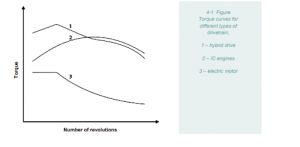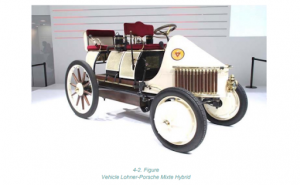Lesson 5: Introduction and history of HYBRID ELECTRIC VEHICLES (HEV), PLUG-IN HYBRID ELECTRIC VEHICLE (PHEV)
In this lesson, we’ll explore the fascinating world of Hybrid Electric Vehicles (HEV) and Plug-In Hybrid Electric Vehicles (PHEV). We will dive into their introduction, the concept of combining different energy sources for propulsion, and the rich history of hybrid vehicle development.
- Introduction to Hybrid Electric Vehicles (HEV) and Plug-In Hybrid Electric Vehicles (PHEV)
Hybrid vehicles are a unique class of vehicles that combine two or more different types of energy sources to generate mechanical energy for propulsion. The most common hybrid electric vehicles utilize an internal combustion engine (either petrol or diesel) and an electric motor for propulsion. Some hybrids also incorporate hydraulic or pneumatic drive systems, but we will primarily focus on the widely adopted internal combustion engine and electric motor combination.
1.1 The Strengths and Weaknesses of IC Engines and Electric Motors
- Internal combustion engines (IC engines) offer lightweight and compact design, quick refueling, and extended driving range. However, they suffer from lower efficiency and produce harmful exhaust emissions, especially in urban conditions.
- Electric motors deliver instant torque, making them ideal for acceleration. They are emission-free and maintain high efficiency regardless of load. However, electric motors are heavier and require space for batteries, which impacts vehicle weight and range. Recharging batteries is slower than refueling with fossil fuels.
1.2 The Advantages of Hybrid Vehicles
- Combining the strengths of IC engines and electric motors minimizes their respective weaknesses.
- IC engines are used when energy efficiency is crucial, leading to the possibility of employing smaller, more fuel-efficient engines.
- Regenerative braking systems can capture kinetic energy, converting it into electrical energy for further use.
- In certain situations, hybrid vehicles can operate solely on electric power, reducing emissions.

- A Historical Perspective
2.1 Early Hybrid Vehicle Patents
- While the concept of hybrid vehicles dates back to the late 19th century, their development accelerated in the late 20th century due to pollution concerns, rising oil prices, and depleting oil reserves.
- The first hybrid vehicle was showcased at the 1899 Paris Motor Show, featuring an internal combustion engine paired with electric motors to recharge batteries and extend vehicle autonomy.
- Innovators like Camille Jenatzy and Louis Antoine Kriéger contributed to early hybrid vehicle development in the early 1900s.
2.2 The Lohner-Porsche Mixte Hybrid
- The Lohner-Porsche Mixte Hybrid, introduced in 1900, featured an internal combustion engine driving a generator to charge batteries.
- Electric motors in the front wheel assembly eliminated the need for a traditional transmission system, achieving high utility efficiency.
2.3 The Temporary Halt in Hybrid Development
- Low oil prices and advancements in IC engine technology temporarily slowed hybrid vehicle development.
- The Owen Magnetic Model 60 Touring (1921) was an exception, using an IC engine to drive a generator for electric motors on the rear wheels.
2.4 The 1970s Revival
- The 1970s oil crisis led to a renewed interest in electric and hybrid vehicles, with the U.S. passing acts for research into these technologies.
- Experimental hybrid vehicle models were developed during this period.
2.5 Volkswagen Taxi and Other Early Concepts
- Volkswagen introduced the VW Taxi in the 1970s as a parallel hybrid vehicle.
- FIAT presented the 131 Ibrido, while Briggs and Stratton and Daihatsu also explored hybrid concepts in the early 1980s.
2.6 Audi Duo and the First Toyota Prius
- Audi introduced the Audi Duo in 1989, an experimental hybrid car based on the Audi 100 Avant Quattro.
- Toyota revolutionized the market with the introduction of the first-generation Prius in 1997, marking the beginning of hybrid vehicles in mass production.

Conclusion
- Hybrid Electric Vehicles (HEV) and Plug-In Hybrid Electric Vehicles (PHEV) offer a unique combination of internal combustion engines and electric motors to optimize efficiency and reduce emissions.
- The history of hybrid vehicle development spans over a century, with innovations and challenges along the way.
- The early 21st century marked a significant turning point with Toyota’s introduction of the mass-produced Prius, setting the stage for widespread adoption of hybrid technology.
In this lesson, you’ve gained insight into the concept of hybrid vehicles and their rich historical development. We’ll continue to explore these vehicles in-depth in the next lessons.